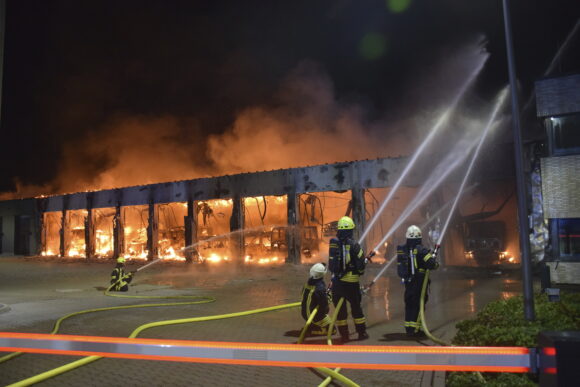From roof-mounted solar panels and automated warehouses to electric vehicle depots, green technologies are transforming commercial property risk profiles.
While these innovations improve energy efficiency and sustainability, they also introduce new challenges: including fire hazards from solar photovoltaic (PV) systems, elevated fire loads from robotics, and lithium-ion battery risks in automotive manufacturing plants and electrical vehicle hubs.
But evolving building codes and global sustainability regulations mean that the embrace of environmental, social and governance (ESG) criteria are no longer optional for businesses and by extension, their insurers. And while sustainable building practices may mean higher upfront costs for insurers, they also push the industry to adapt to the changing world.
(Editor’s note: ESG refers to a set of standards used to measure an organization’s environmental and social impact, or what it is doing in the area of corporate social responsibility).
Despite growing political polarization regarding ESG policy direction in the U.S., ESG trends continue to gain momentum globally. With multinational companies having subsidiaries in Europe and other regions, ESG considerations remain relevant for businesses that operate on a global scale.
Even in the U.S., policyholders and their insurers will have to address the risks associated with green technologies – although they might not be officially called “ESG.”
Harnessing Sun’s Power
Roof-mounted solar panels are rapidly becoming a popular solution for commercial and industrial buildings, helping businesses to significantly lower energy consumption and reduce operating costs. Whether integrated into new construction projects or retrofitted onto existing properties, solar PV systems are a cornerstone of sustainable energy practices.
Solar panels come with their own set of challenges which need to be managed. A 2020 incident in Kent, in the UK, where a solar panel fire damaged a block of flats and left 30 people homeless, was attributed to a faulty installation.
Roof-mounted solar PV systems add complexities, because they introduce an ignition source and a combustible loading to buildings. Faulty installation or defective components, such as inverters or wiring, can lead to electrical issues, which, in rare cases, can spark fires.
For firefighters, solar panels can make tackling a fire more challenging, as they can’t be easily disconnected from their power source and can increase the risk of electric shock. Panels also add weight to roofs, which may lead to a collapse in certain situations.
When a fire broke out in the solar panels on the roof of a 45,000-square-metre Lidl commercial warehouse in Peterborough, UK, in 2024, it took 11 fire engines, a water carrier, a special aerial appliance used for complex fires, and more than 50 firefighters to bring the blaze under control.
As a result of these incidents, engineers and fire safety teams across the globe are now collaborating to make systems safer and easier to manage in emergencies.
Property insurers can also encourage insured businesses to adopt specific safety measures such as hiring qualified contractors for installations, conducting regular inspections, having emergency electrical disconnection plans and appropriate spacing between panels, discouraging installation of panels on combustible roofs, and informing local fire services.
Extreme weather and other environmental factors also need to be considered when assessing the suitability of installing roof-mounted solar PV systems.
Robots and Smart Warehouses
Manufacturing and storage businesses are increasingly using automation to streamline their operations. Automated mobile robots (AMRs) navigate warehouse floors, transporting goods or assisting with picking and packing. Automated storage and retrieval systems (ASRS) store and retrieve products. These systems improve productivity, accuracy, and cost-effectiveness, while reducing energy consumption, material waste and manual labour.
However, they have also introduced new hazards such as lithium-ion batteries in ASRS generating excessive heat. The increased storage capacity raises the fire load per square-metre, complicating fire prevention. Sprinklers may also be less effective, and the dense layouts and intricate robotic operations make it harder to locate fire sources.
The 2019 Ocado automated warehouse fire, in Andover, UK, caused by an electrical fault in a battery charging unit, burned for four days and completely destroyed the facility.
Smart technologies used for building controls and automation systems can also expose companies to cybersecurity risks from hackers.
Electric Vehicle Fires
While concerns about lithium-ion battery fires have been raised, they are statistically far safer in terms of fire risk than traditional internal combustion engine vehicles, according to the Energy Saving Trust. Battery-related fires can result from manufacturing defects, improper use, overcharging, or physical damage.

Fires in EVs tend to spread rapidly, generating intense heat and releasing toxic fumes. In EV depots, fires can easily spread between parked vehicles as was seen in the 2021 depot fire in China that destroyed five electric buses, and the depot fire that destroyed 25 electric buses in Germany in the same year.
Extinguishing an EV battery fire can require up to 150,000 litres of water, but tools have recently been introduced that can pierce the battery casing and inject water directly. Further safety improvements are being developed, such as more fire-resistant batteries and early warning systems.
Underwriters should consider the concentration of values in vehicle depots and manufacturing plants, the risk of batteries catching fire, and whether the insured has taken appropriate fire protection measures.
Property underwriters have an important part to play in supporting clients as they adopt ESG measures by providing tailored solutions such as “upgrade to green” policies and proactive risk mitigation advice.
By collaborating with specialist property risk surveyors and underwriters, property insurers can empower clients to embrace ESG initiatives with confidence.
Top photograph: Firefighters try to extinguish a fire in a vehicle depot in Stadtallendorf, Germany, on Wednesday Oct. 16, 2024. (Michael Rinde/dpa via AP). The fire broke out on an emergency vehicle belonging to the fire department, which contained lithium-ion batteries and an external power connection, according to news reports.
Topics Property
Was this article valuable?
Here are more articles you may enjoy.



 AIG Partners With Amwins, Blackstone to Launch Lloyd’s Syndicate Using Palantir
AIG Partners With Amwins, Blackstone to Launch Lloyd’s Syndicate Using Palantir  Court Ruling Could Help Shed Light on Owners of Litigation Funders, Medical Clinics
Court Ruling Could Help Shed Light on Owners of Litigation Funders, Medical Clinics  Brown & Brown Files Suit Over Alleged Howden Poaching of 200+ Employees
Brown & Brown Files Suit Over Alleged Howden Poaching of 200+ Employees  Three Top P/C Insurers Account for Most of Insurance AI Patents
Three Top P/C Insurers Account for Most of Insurance AI Patents 


